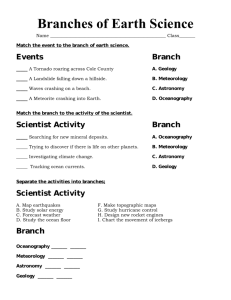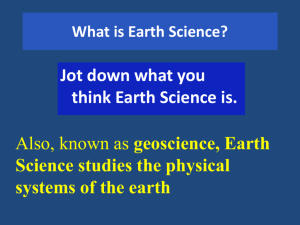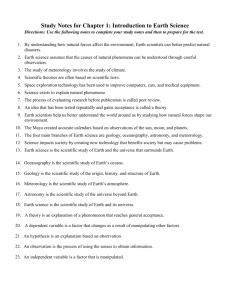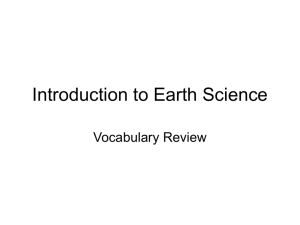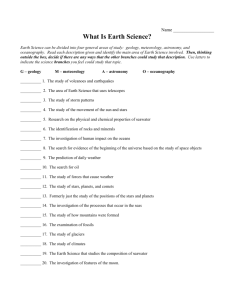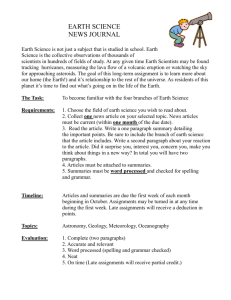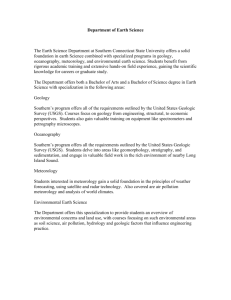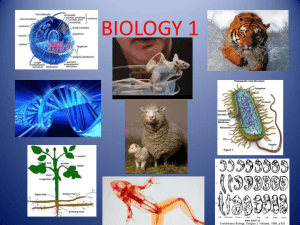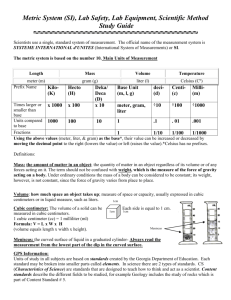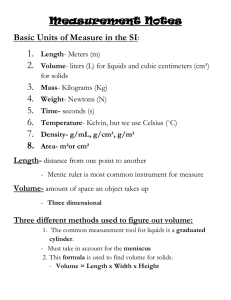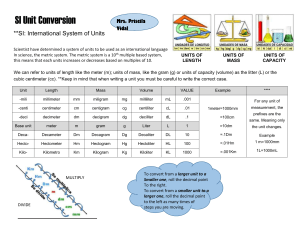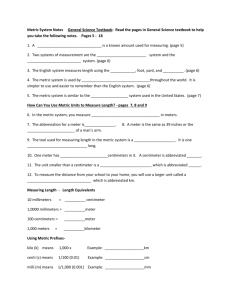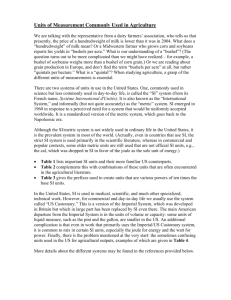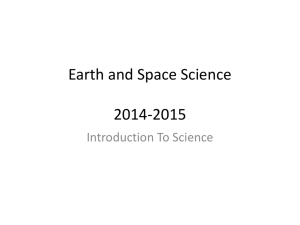Chapter 1: The Nature of Science STUDY GUIDE Answer Key
advertisement
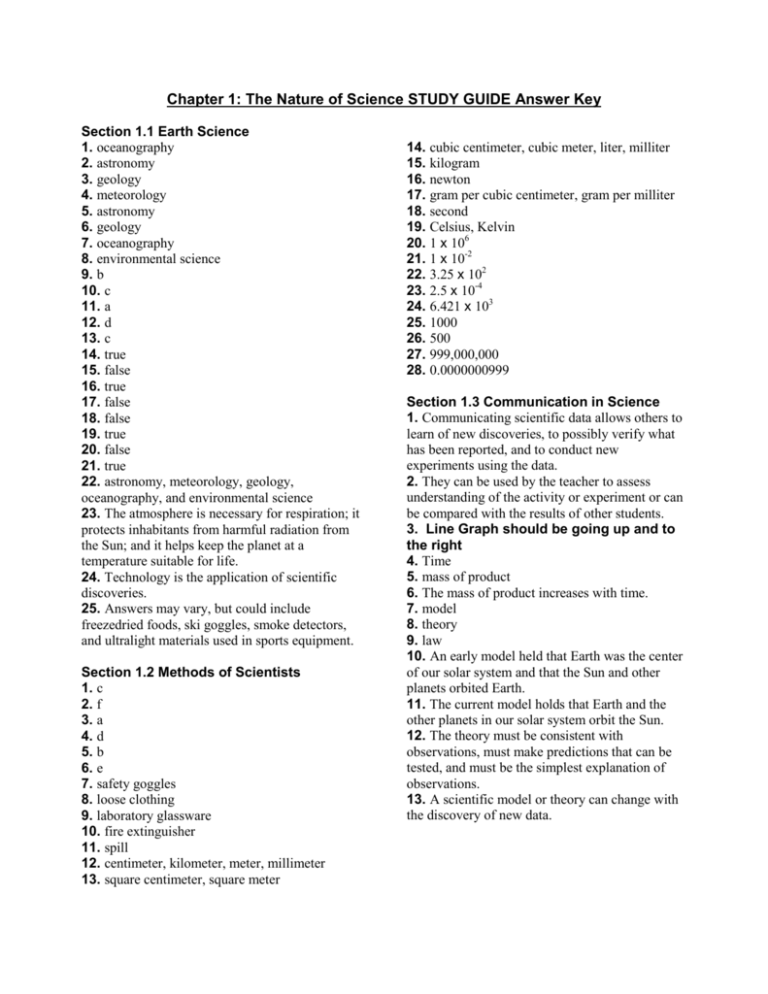
Chapter 1: The Nature of Science STUDY GUIDE Answer Key Section 1.1 Earth Science 1. oceanography 2. astronomy 3. geology 4. meteorology 5. astronomy 6. geology 7. oceanography 8. environmental science 9. b 10. c 11. a 12. d 13. c 14. true 15. false 16. true 17. false 18. false 19. true 20. false 21. true 22. astronomy, meteorology, geology, oceanography, and environmental science 23. The atmosphere is necessary for respiration; it protects inhabitants from harmful radiation from the Sun; and it helps keep the planet at a temperature suitable for life. 24. Technology is the application of scientific discoveries. 25. Answers may vary, but could include freezedried foods, ski goggles, smoke detectors, and ultralight materials used in sports equipment. Section 1.2 Methods of Scientists 1. c 2. f 3. a 4. d 5. b 6. e 7. safety goggles 8. loose clothing 9. laboratory glassware 10. fire extinguisher 11. spill 12. centimeter, kilometer, meter, millimeter 13. square centimeter, square meter 14. cubic centimeter, cubic meter, liter, milliter 15. kilogram 16. newton 17. gram per cubic centimeter, gram per milliter 18. second 19. Celsius, Kelvin 20. 1 x 106 21. 1 x 10-2 22. 3.25 x 102 23. 2.5 x 10-4 24. 6.421 x 103 25. 1000 26. 500 27. 999,000,000 28. 0.0000000999 Section 1.3 Communication in Science 1. Communicating scientific data allows others to learn of new discoveries, to possibly verify what has been reported, and to conduct new experiments using the data. 2. They can be used by the teacher to assess understanding of the activity or experiment or can be compared with the results of other students. 3. Line Graph should be going up and to the right 4. Time 5. mass of product 6. The mass of product increases with time. 7. model 8. theory 9. law 10. An early model held that Earth was the center of our solar system and that the Sun and other planets orbited Earth. 11. The current model holds that Earth and the other planets in our solar system orbit the Sun. 12. The theory must be consistent with observations, must make predictions that can be tested, and must be the simplest explanation of observations. 13. A scientific model or theory can change with the discovery of new data.
